Determining the weight of an air conditioner is crucial to the area [e.g., wall or window] in which the unit will be mounted. It also dictates whether or not you'll need an extra pair of hands during the shipping and installation. With that, we have gathered helpful information about AC weights to help you make the right buying decisions!
Air conditioners can weigh between 60 to 180 lbs. That's equivalent to 27 to 82 kg. Such weights are attributed to lots of copper in three essential components of an AC, namely, evaporator, condenser, and compressor.
This article will clarify the types of ACs, their corresponding weights, and their power measured in tons or BTU. Also, we are going to make you acquainted with BTU computations. Stick around to learn more!
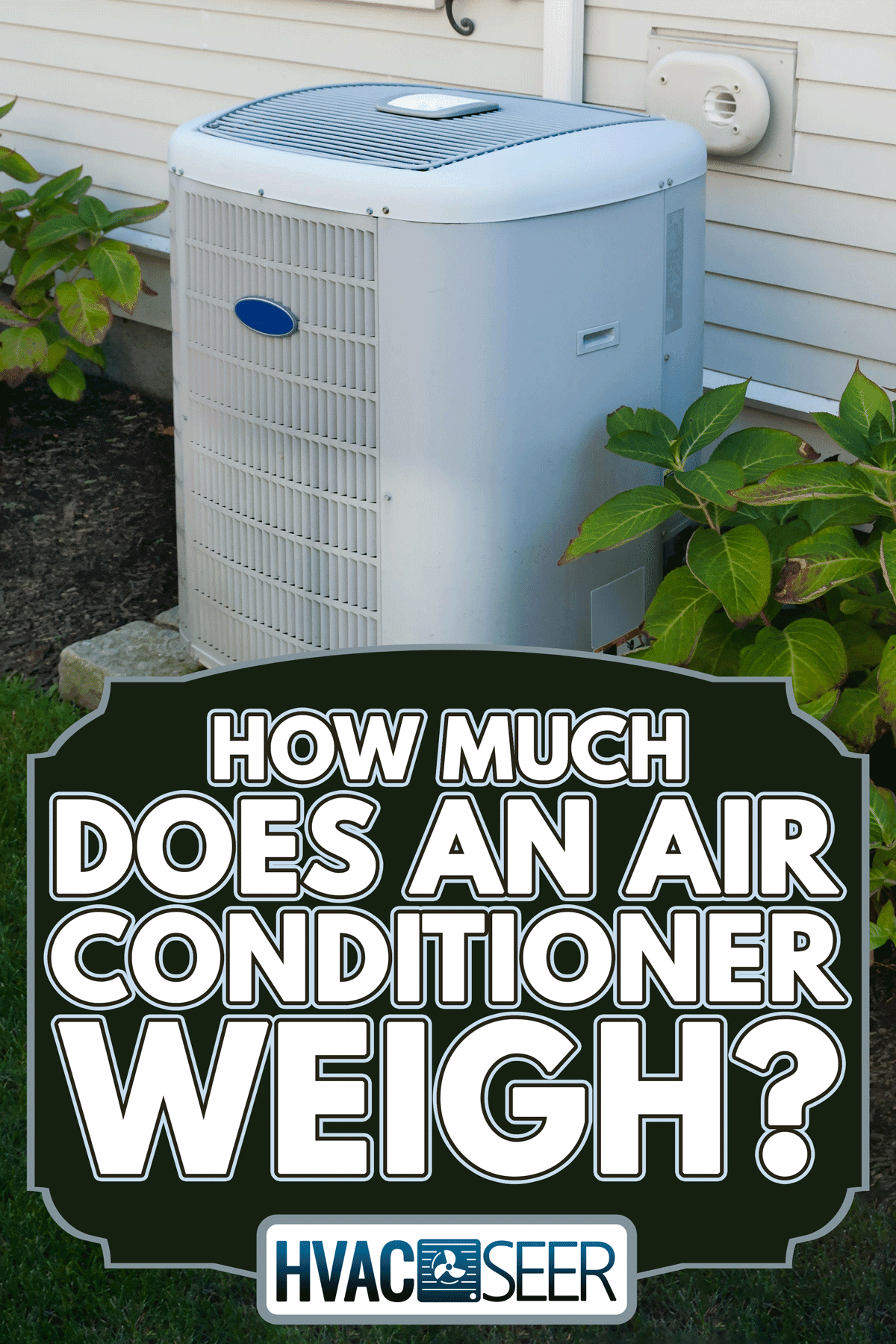
How Much Does An Air Conditioner Weigh?
As mentioned previously, an air conditioner can weigh as much as 82 kg for a whole-house unit. On the other hand, the lightest unit can weigh at least 27 kg, a window model.
However, air conditioners installed in commercial or industrial spaces can weigh beyond 300 lbs or 136 kg. The weight is relatively high because many parts of these ACs are made of copper, steel, and aluminum.
Aside from the fact that AC's components are made of metals, the use of more BTU makes a unit heavier. Therefore, as the BTU output increases in coverage, the weight of an air conditioner likewise becomes heavier. Remember that the weight of a unit also depends on the brand you choose.
Before we delve deeper into the different weights of air conditioners, we'll need to understand the main difference between tonnage and BTU.
While tonnage measures how much heat an air conditioner can remove in an hour, BTUs are a standard measure of heat. Take note that tonnage indicates the unit's cooling capacity and does not refer to the weight of the AC unit.
Ton to BTU Conversion
There are 12,000 BTUs in one ton. Therefore, you simply multiply every ton by 12 to get the number of BTUs. See the table below for your guide:
Six Types of ACs and Their Approximate Weights
At this point, we'll show you the average weights of the six major types of ACs, their BTU, and cooling coverage areas. From lightest to heaviest weight, we can put air conditioners in this order: window models, portable, ductless, then whole-house units.
1. Central AC

Standard central air units weigh between 70 lbs to 80 lbs. This type can efficiently cool rooms with 500 to 700 square feet areas. Following the definition of tonnage, we can say that a two-ton air conditioner has the power to remove 24,000 BTUs per hour.
2. Window AC
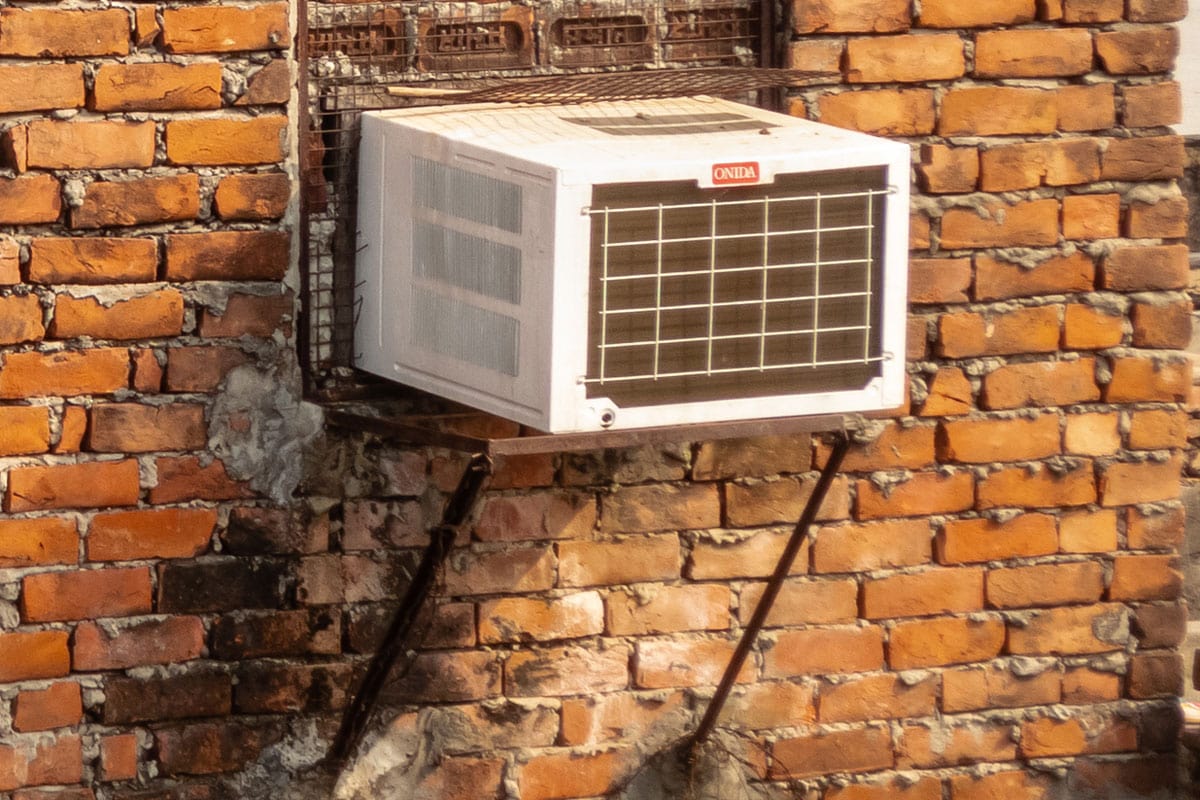
The weight of a window air conditioner ranges from 39 lbs up to 130 lbs. Typically, this type has a cooling capacity from 5,000 to 12,500 BTU per hour.
Window ACs can cool 100 up to 550 square feet areas. Remember that an air conditioner needs 20 BTU for each square foot of living space.
Check out this U-shaped window air conditioner on Amazon.
3. Split AC
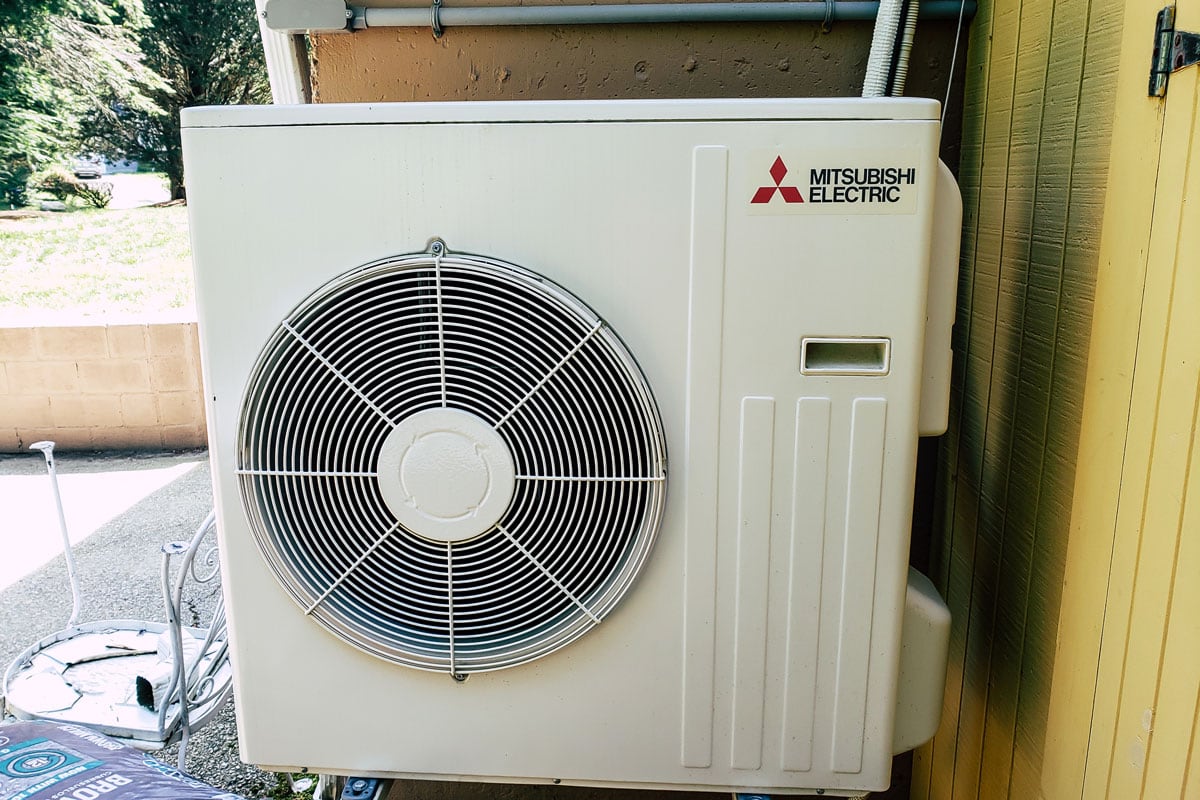
A split air conditioner has two separate units: condensing and air handling units.
The air-handling unit is installed inside the air-conditioned room, while the condensing unit is mounted outside a house. Each of these has different weights, but generally, the indoor unit weighs around 26 lbs [12 kg].
To decide on the ideal split AC according to the size of your room, use this handy calculator.
4. Portable AC
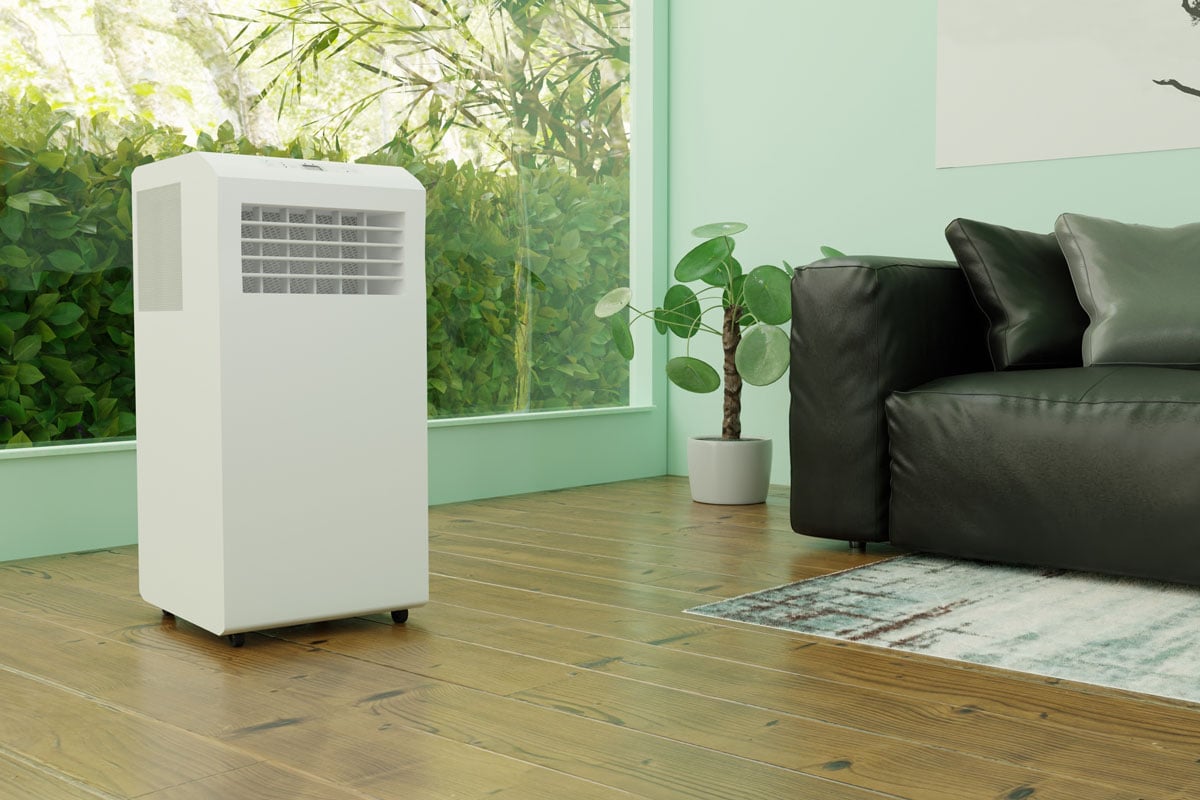
Still, depending on the brand, a portable AC can weigh between 53 lbs to 77 lbs, but some brands can even weigh as much as 90 lbs [41 kg]. This type is relatively bulkier and thus uses greater BTU per square foot than a window model.
For instance, a 53-pound unit has 5000 BTUs while a 90-pound unit has 14,000 BTUs, covering up to 150 square feet and 500 square feet of rooms, respectively.
Because a portable AC can cool larger rooms, it can go as high as 36000 BTUs, and such a unit can weigh beyond 400 lbs!
Check out this product on Amazon.
5. Ductless AC
Similar to a split-type air conditioner, a ductless AC has indoor and outdoor units. Generally, the indoor unit is lighter and can weigh from 17 lbs to 40 lbs with an average of 26 lbs [12 kg].
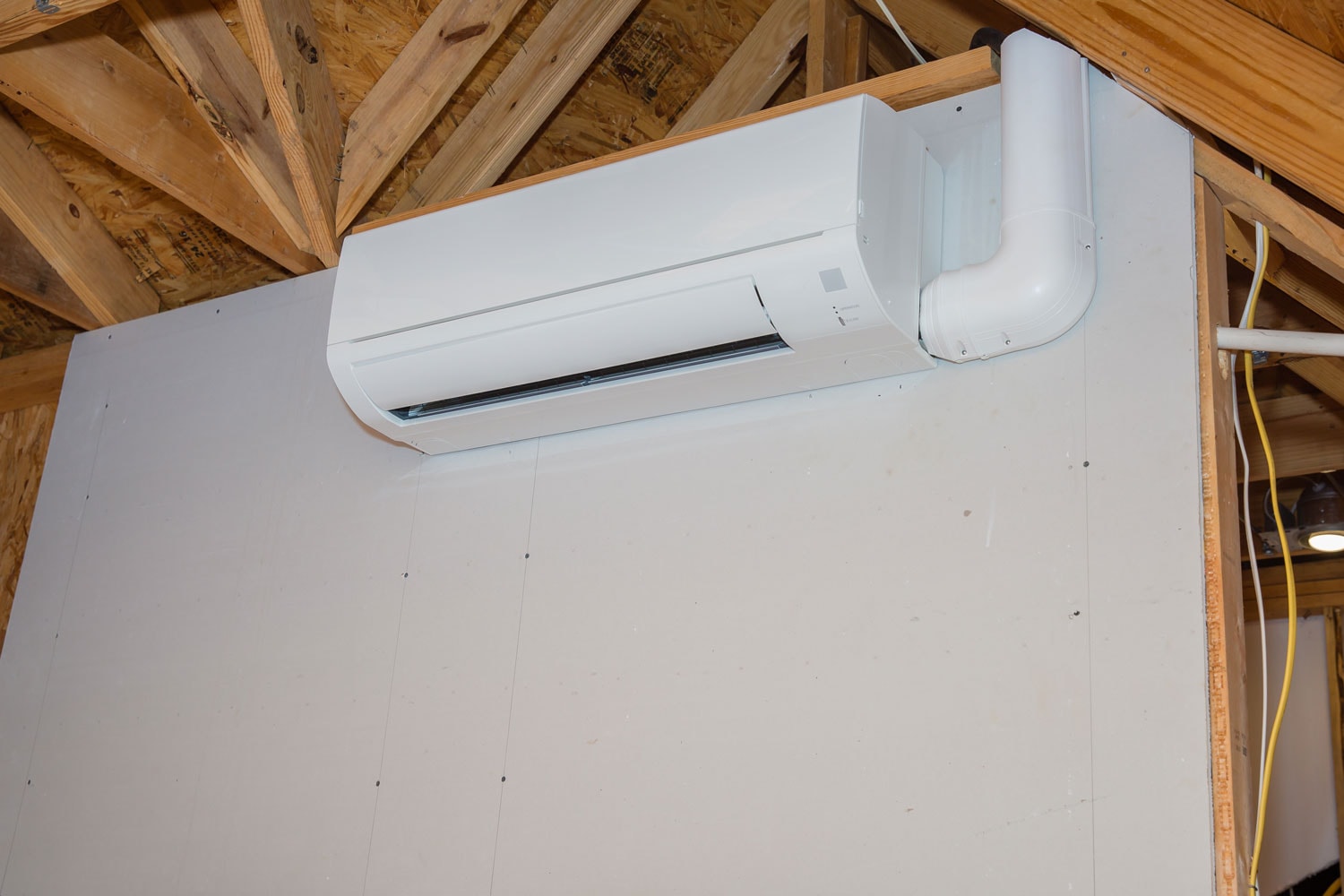
A brand available on the market with the lightest weight of 17 lbs has a cooling capacity of 9,000 BTU per hour. Meanwhile, the heaviest brand at 40 lbs is powered with 24,000 BTU output per hour.
6. RV AC
This air conditioner, basically a metal box, works by regulating the temperature inside a recreational vehicle or RV. There are lightweight [below 100 lbs] and heavyweight [above 100 lbs] RV units.
A reliable unit of this type should have at least 12,000 BTU per hour of cooling output, especially during heatwaves. 15,000 BTUs is the ideal cooling output in the summer heat. 20,000 BTUs is too much and no longer cost-effective for an RV.
Check out this 15,000 BTU RV air conditioner on Amazon.
How much does a 5,000 BTU air conditioner weigh?
With a capacity to cool a room of about 150 square feet, air conditioners with 5,000 BTU output weigh approximately 45 lbs or 20 kg.
Check out this 5,000 BTU window-mounted unit on Amazon.
How much does a 10,000 BTU air conditioner weigh?
The average weight of this air conditioner with 10,000 BTU cooling output is around 65 lbs. It can cool a reasonable-sized room of up to 450 square feet.
Check out this unit on Amazon.
How much does a 15,000 BTU air conditioner weigh?
A window-mounted air conditioner with a 15,000 BTU cooling capacity weighs around 112 lbs [51 kg]. It can cool medium rooms of up to 800 square feet.
Check out this 15,000 BTU air conditioner on Amazon.
Why Should Tonnage Matter?
Finding proper tonnage is essential before buying an air conditioning unit. Failing to do so will compromise the performance and energy efficiency of the cooling system.
Understanding tonnage can help you also determine the amount of energy in watts an AC can consume. Hence, for every ton, 3500 watts are used for cooling.
How Much Does a 2, 3, and 4-Ton AC Weigh?
A 2-ton unit has a 24,000 BTU rating and weighs around 160 lbs or 73 kg.
A 3-ton unit weighs between 200 and 215 lbs, while a 4-ton unit, which is slightly bigger, weighs around 300 lbs. While a 3-ton unit can remove 36,000 BTUs of heat every hour, a 4-ton unit can suck out 48,000 BTUs an hour.
How Much Does a 5-Ton AC Weigh?
With a BTU rating of 60,000, and a weight of 240 lbs [108 kg], a 5-ton unit is the strongest and most impressive air conditioner! This whopping cooling capacity enables the unit to cool an area of more than 2,000 square feet!
Other brands, however, can weigh more than 250 lbs.
Tonnage can reach up to 25 tons and beyond. Those scales are already intended for highly industrial or commercial spaces.
Conclusion
We've learned that the weight of an air conditioner is directly proportional to its cooling capacity. You should not think that you'll always need an AC with a high BTU rating, or you may pay unnecessary higher electric bills and wear down your HVAC system fast. Consider the size of the room, including the height of the ceiling and the type of AC suitable for your home.
Lastly, don't hesitate to seek advice or assistance from HVAC experts for the best air-conditioning experience!
Related Posts
Has this article provided you with the right kind of information? Surely, there's so much to learn from these BTU-related posts:
How Much Power Does A Portable Air Conditioner Use? [By BTU]






